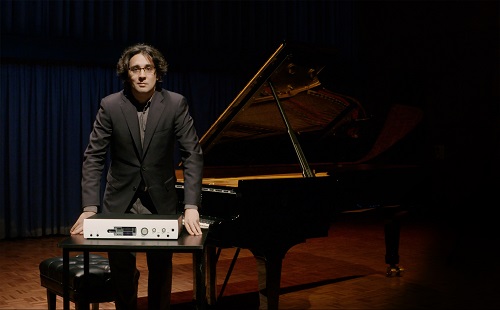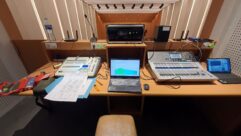
Just one week after investing in a Prism Sound Atlas audio interface, Australian pianist, sound engineer and film director Paul Carasco says the unit produced enough income to pay for itself.
“No other piece of gear has generated anywhere near the income in relation to its cost as my Prism Sound Atlas,” he says. “My guiltiest pleasure is knowing that, with Prism Sound interfaces, no matter where I go or what I am recording I can have complete confidence. Prism Sound means never having to say you’re sorry.”
Renowned as a classical musician, Paul Carasco studied piano at the Queensland Conservatorium of Music, Griffith University, before branching out into the field of audio engineering. Since 2005 he has produced and engineered over 40 albums featuring both major Australian and international orchestras and soloists in some the world’s most prestigious concert halls. In addition to maintaining his skills as a concert pianist – most recently performing as a soloist with the Queensland Symphony Orchestra – Paul Carasco is also a senior acoustical and audio consultant for SH Acoustics in the USA.
Carasco says his journey as a sound engineer has consisted of a series of ‘aha’ moments. One of the most important of these was when Peter Orehov, from CDA Pro Audio, sent him a Prism Sound ADA-8XR multi-channel converter to audition.
“It really was a case of, I was blind and now I can see,” Carasco recalls, “Suddenly everything came into focus. It was like stepping out from playing ball in the back yard and finding myself in Yankee Stadium.”
Over the last three years, Carasco has made the jump from being exclusively a sound engineer to becoming a classical film director/producer – a move that reflects the growing trend for musicians to embrace video. By approaching filming as sound engineer, Carasco has carved a niche for himself: editing to create the ‘perfect’ performance on video.
“The added distraction of capturing video made it imperative to simplify my audio workflow,” He says. “As this needed to be done without compromising on sound quality, I turned to Prism Sound’s Atlas interface. Regardless of the distractions I face, audio fidelity is paramount and nothing comes close to the Atlas as an all in one unit: 8 gorgeous mic pres. 2 headphone outputs, circuitry you can set your heart by and of course what it’s all about – the convertors. I am also ecstatic by the convenience of being able to connect multiple units to allow for 16 or more channels on the rare occasions it is needed.”
International reviews of Carasco’s recordings often highlight his recording quality and he believes Prism Sound plays a key part in this.
“I get great joy knowing that I made the choice to go with Prism Sound and that my desire for perfection is not all in my head,” he explains. “Prism Sound produces tangible results that are quantifiable, offering a level of excellence that translates to the listener.”
Carasco is now putting Atlas through its paces on a variety of music and film projects in Vietnam, Russia, the USA, France and Australia.
-ends-
About Prism Sound
Founded in 1987, Prism Sound manufacture high-quality professional digital audio hardware and software for music and sound production for the music, film, television, radio and multi-media markets and a range of specialized measurement equipment used in audio equipment development, manufacturing, system building and maintenance. The company’s product range includes a range of audio interfaces covering applications from desktop or mobile recording & production to major studio facilities; Prism Sound also produces the SADIE audio production workstation software used by major national broadcasters such as the BBC, as well as many of the world’s leading mastering houses and classical or live music recording engineers. Prism Sound measurement equipment is used to measure the performance of either audio electronic devices or electroacoustic devices and is well established in major manufacturing sectors such as automotive electronics, headphones and headsets as well as professional audio.










